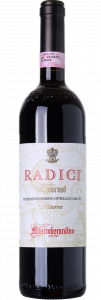



















The Mastroberardino family, leaders in Italian viticulture, are largely responsible for the revival and elevation of Irpinian and Campanian winemaking post WWII. Their efforts ignited a resurgence in quality red and white wine production in all of Southern Italy. Working primarily with Campania's ancient, native varietals, Fiano, Greco, and Aglianico, Mastroberardino has resuscitated would-be extinct grapes into world class varieties.
The Mastroberardino family has been farming grapes and producing wine since the mid-18th century, dating back 10 generations. The family settled in the town of Atripalda in 1878, in the district of Irpinia, at a time when the royal House of Bourbon still occupied the land. It was 9th generation, Antonio Mastroberardino, who brought the winery international recognition, but his career was initially mired in hardship. Returning home after WWII, Antonio found his family’s estate in ruins; the result of war, economic depression, phylloxera, and neglect. Determined to rebuild and grow his family’s business, he began a comprehensive restoration project at the estate and vineyards. He spent the next few decades purchasing the best vineyards in Irpinia and greater Campania, where he dedicated plantings to three nearly extinct ancient Campanian grape varietals: Fiano, Greco and Aglianico. While many other Italian winemakers chose to cultivate international grapes at the time, Antonio wanted to preserve Campania’s winemaking tradition and resuscitate its indigenous grapes, a decision that has shaped all Campanian wine production since.
The family estates are all located in Irpinia, covering three DOCG production areas: Greco di Tufo, Fiano di Avellino, and Taurasi. Neighboring the Mediterranean, Irpinia is bordered by the foothills of the Apennine Mountains, making this a pre-Alpine region. A continental climate promotes cold, snowy winters and the high elevation, around 300-600m a.s.l., produces large temperature shifts from day to night. Ideally situated, Irpinia is protected from rain and frost by the mountain; its elevation protects against humidity found in the lower valleys and rivers.
Mastroberardino’s vineyards cover 14 estates across Campania, totaling 785 acres.
In 1968, Antonio bottled three Taurasi Riserva wines, labeling them with specific names within Taurasi, where the grapes were harvested. This concept of site-specific designation was barely established in Italy at the time; even in Piedmont, commune and single-vineyard wines were in their infancy. While the family no longer bottles these three cru wines, Antonio’s foresight and innovation, and the work he did to preserve the native grapes of his region, brought attention and prestige to Campanian wines that arguably set off a quality winemaking revolution in Southern Italy.
Piero, Antonio’s son and 10th generation vintner, continues his family’s passion for restoration and preservation. Piero has been at the helm of the winery since the mid-nineties and has spearheaded the prestigious research and planting project, Villa dei Misteri, aimed at reconstructing the ancient vineyard of Pompeii. Piero is also a professor of Business Management at the University of Foggia in Campania, as well as a widely recognized expert on international management.
In order to view this website, you must be at least 21 years of age.